6 Practices of Thoughtful Leaders
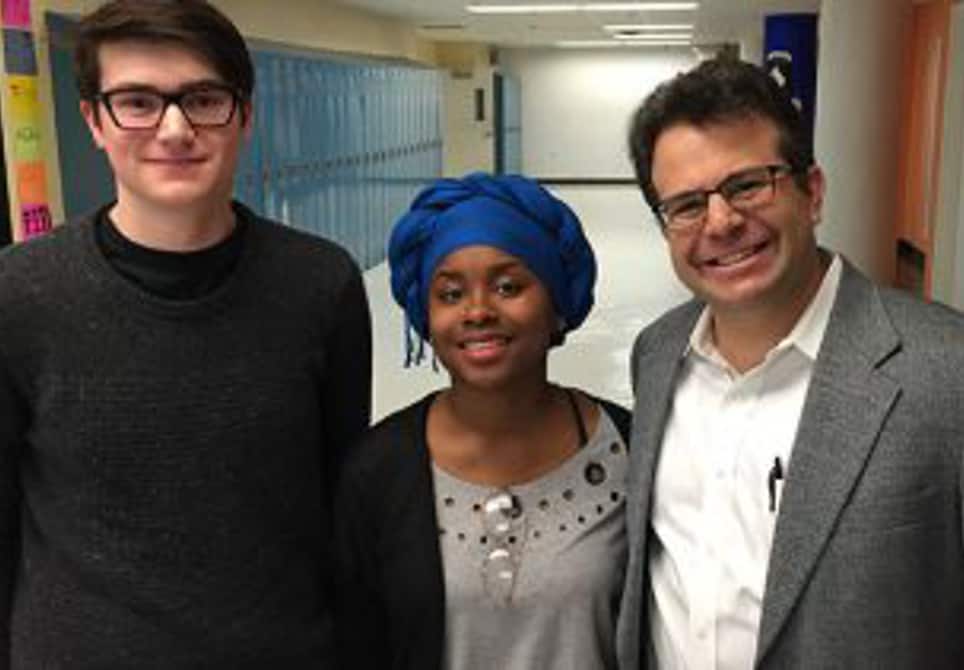
In times like these when it’s obvious that the world is complex and contested that it is important for our young people to have thoughtful places to go to school.
If mindfulness is focusing one’s awareness on the present moment, thoughtfulness adds consideration. Thoughtful leaders are intentional about their behavior and communications. They exercise empathy for individuals and communities, they show consideration for the needs of others.
Weeks full of hate and violence make me think of leaders creating thoughtful places where young people practice consideration, collaboration, critical thinking and creativity. Following are snapshots of eight thoughtful leaders.
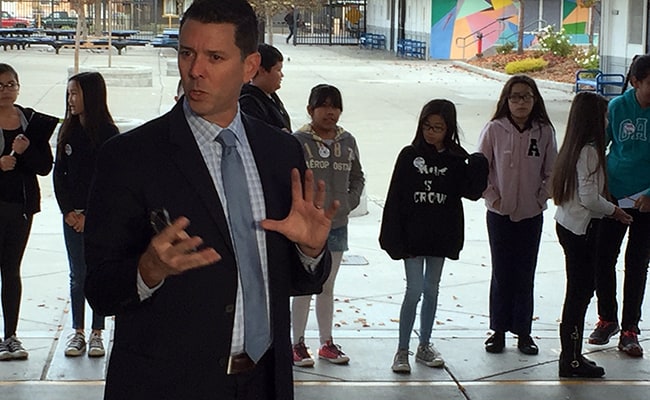
Principal Aaron Brengard (right) created a thoughtful culture at Katherine Smith School (see 18 things we liked) where student ambassadors showcase the project-based approach and show visitors examples of driving questions that initiate projects and quality products and presentations that showcase learning. Student agency is evident from the minute you step on the campus of the New Tech Network affiliate.
“We want people to be perplexed—to embrace the paradox of starting new schools,” said Larry Rosenstock, founder of High Tech High in San Diego. While a great example of a coherent school model where everything works together for teachers and students, High Tech High isn’t simple–there’s a good deal of tension between engagement and rigor, pressure and support, improvement and innovation.
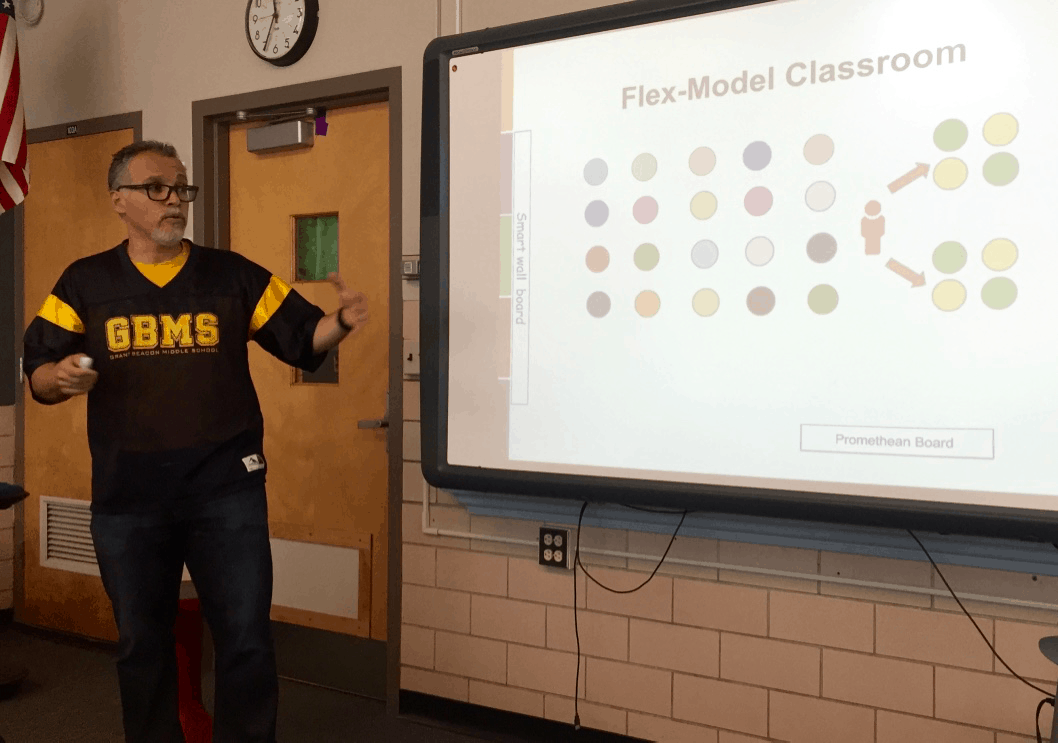
When Alex Magana (right) took over struggling Grant-Beacon Middle School he launched a process of thoughtful coaching and planning that resulted in a phased plan with strong staff support. His messaging about blended learning, extended learning and character development was crisp, and support systems were strong. He created conditions where everyone that chose to stay could be successful.
When teachers Cicely Benoit (blog thumbnail) and Aditi Rao opened Unlimited Potential, the innovative microschool middle school program for nonprofit Houston A+, they created a powerful culture and thoughtful community that includes partnerships with six museums.
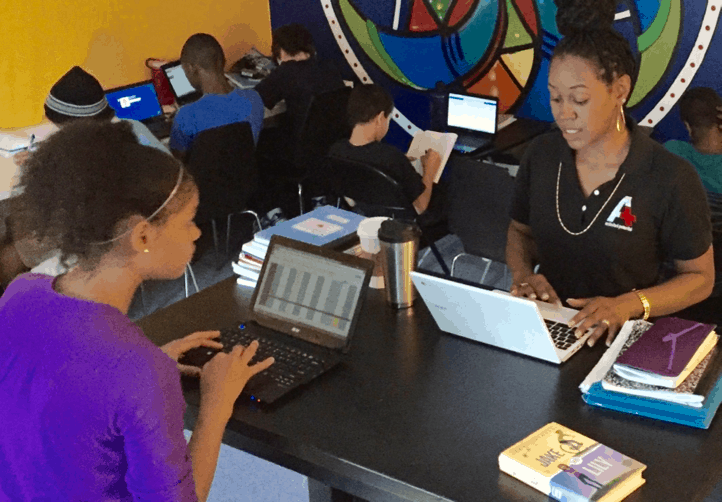 Everything at A+UP is focused on four key areas: communication, character, community, and college and career readiness. The clarity and coherence around these themes is unusual. Houston A+ UP is a great example of #PlaceBased learning–students visit the Museum of Fine Arts each week, and make regular visits to the Museum of Natural Science, The Holocaust Museum, Asia Society and the Houston Zoo.
Everything at A+UP is focused on four key areas: communication, character, community, and college and career readiness. The clarity and coherence around these themes is unusual. Houston A+ UP is a great example of #PlaceBased learning–students visit the Museum of Fine Arts each week, and make regular visits to the Museum of Natural Science, The Holocaust Museum, Asia Society and the Houston Zoo.
Thoughtful leaders ask lots of questions about learner experience. Chris Lehman (blog featured image) leads the inquiry-based approach at Science Leadership Academy in Philadelphia. Shared values of inquiry, research, collaboration, presentation and reflection are evident in every classroom across the thoughtful school model.
Lehman said, “Every student deserves an individual education plan.” He thinks their study skills class is important for helping every student find a way to be academically successful. Every student completes a capstone project that involves giving back to the community.
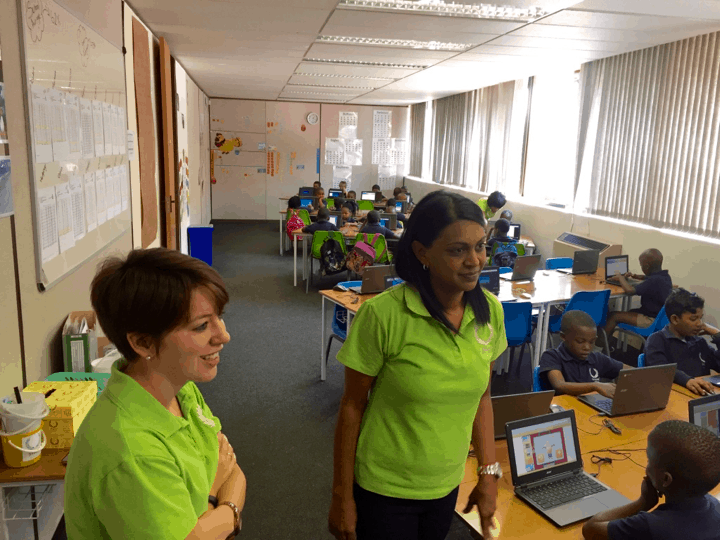
Bailey Thomson (pic on right, left side) was a teacher at blended learning pioneer Rocketship Education when she learned about plans for SPARK Schools in South Africa. Bailey and her colleagues have opened eight blended K-8 schools with an innovative flex model that incorporates design thinking.
Blended Learning Lead Dee Moodley (pic on right, right side) taught in a state primary school in England where technology was part of the curriculum and a blended learning rotation model was emerging. Thomson and Moodley are great examples of innovative educators with a heart for service. They’ve created a coherent school model and continue to iterate as they bring it to scale.
Dr. Charles Spellman isn’t bound by tradition. When employers told him that the generic education wasn’t valuable, he scrapped the program in favor of training on equipment that leading companies use. As a result of the thoughtful services offered at RAMTEC in northeastern Ohio high school, students there are among the only teens in the world certified by leading robotics manufacturers. It takes consideration at scale to provide the quality, efficiency and relevant services that Spellman makes possible.
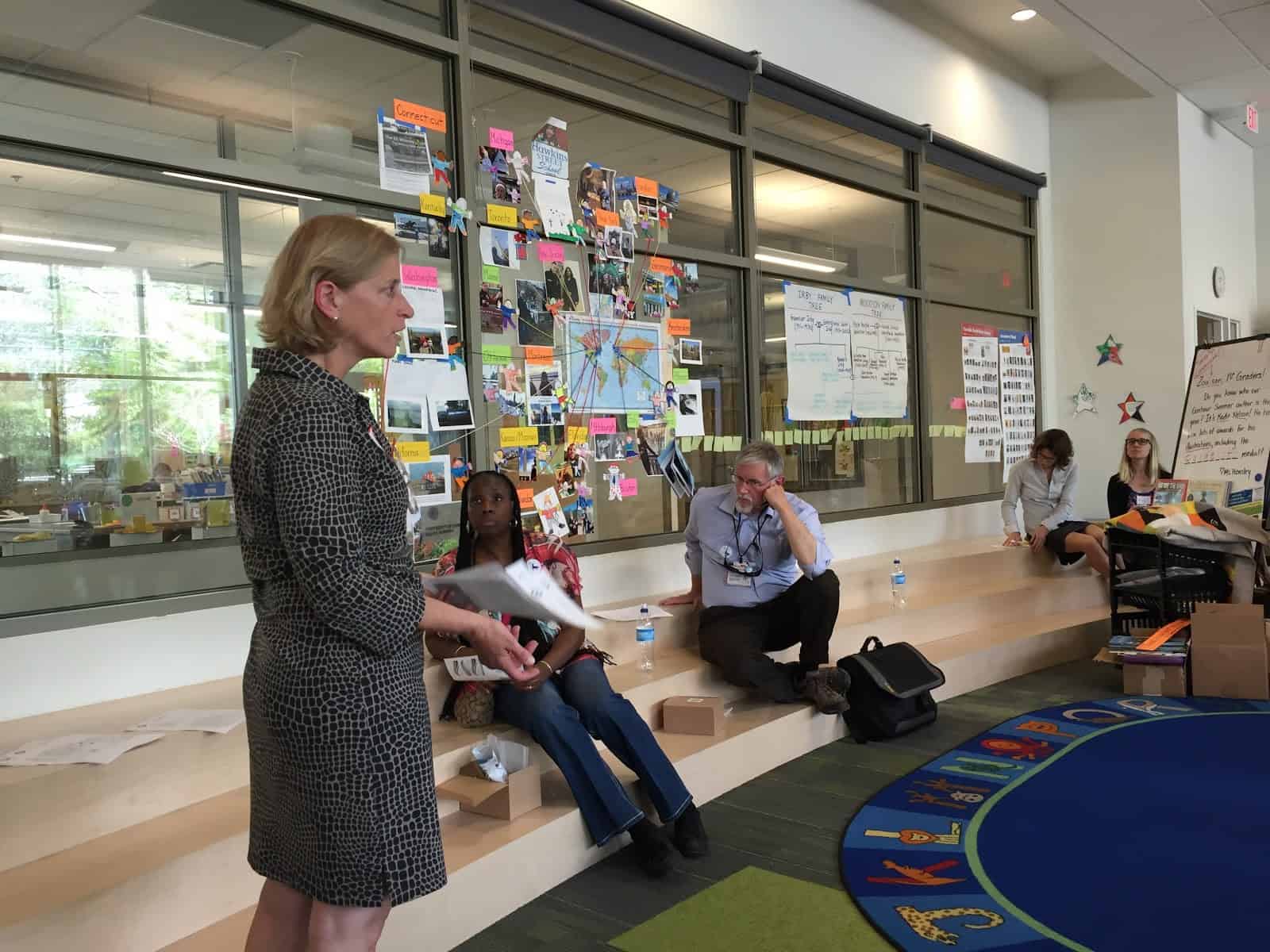
Some leaders are good at putting it all together–at creating a thoughtful synthesis. When Liz Whisnant’s school in northwest Washington D.C. was due for modernization, she led a community conversation that took the core values of Horace Mann Elementary and converted them into design principles that offered specific advice to the architects (listen to her describe the process).
Whisnant (right) helps her community embraces the paradox of complementary learning approaches: one that offers students explicit strategy-based instruction, and one that offers a broad, constructivist approach that allows students to linger in the exploratory and discovery phases, only later to arrive at explicit ones.
Thoughtful leaders are often knowledgeable and skilled, but it’s application that’s key. They uncover and test their assumptions–their mental models of how things work. They construct learning experiences for their community that allow collective examination of assumptions and connections so that they can facilitate a series of temporary agreements that keep the community moving forward.
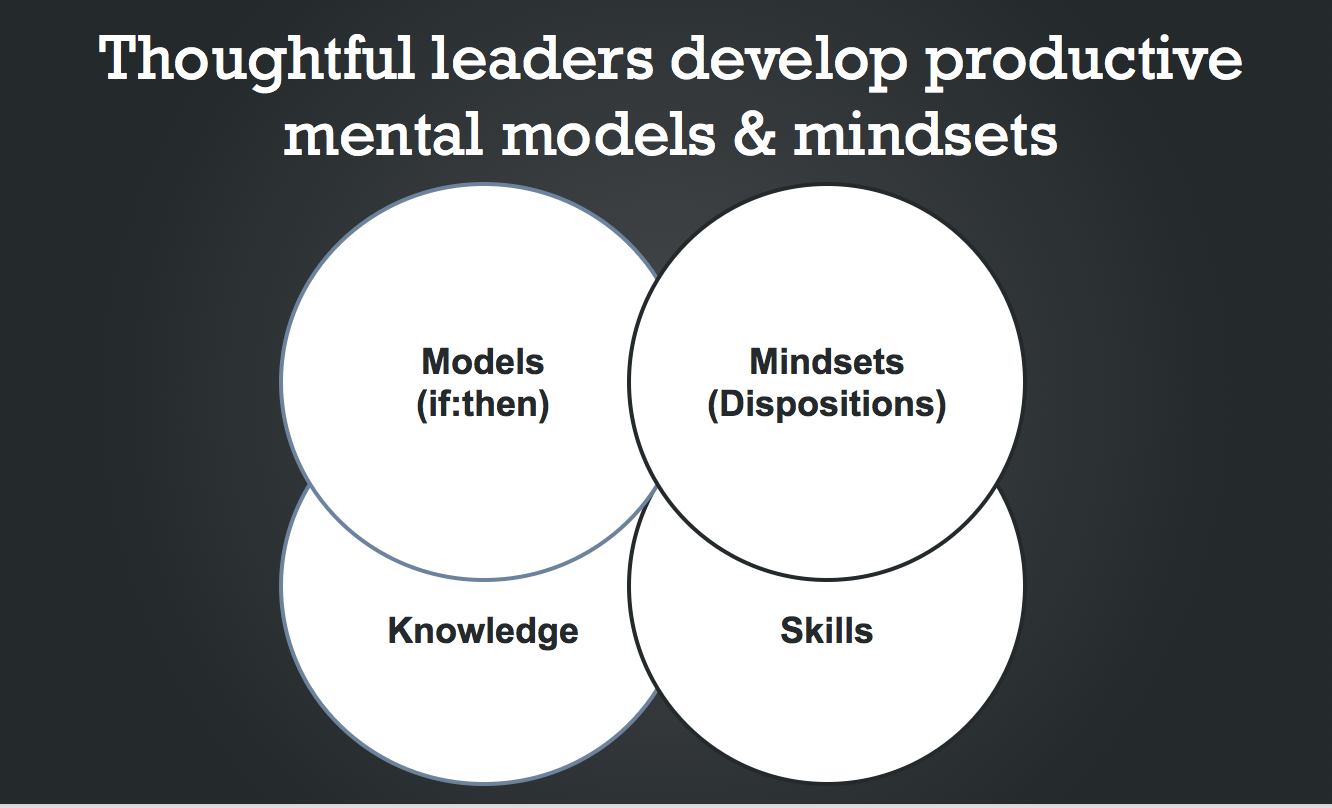
Thoughtful leaders cultivate productive mindsets–the dispositions and predilections that drive behavior and shape the impressions conveyed to others.
Effective leaders create thoughtful cultures and are thoughtful coaches; they create connections and lead thoughtful community conversations; they create coherent and thoughtful organizations that provide thoughtful and relevant services; they help everyone around them create a thoughtful synthesis of what’s happening in a complex and contested world.
For more, see:
- 8 Ways School Leaders Can Practice Empathy in Listening
- Learning (and Teaching) Leadership in the Early Grades
- Core Competencies to Master: Uncovering Your Leadership Potential
Stay in-the-know with all things EdTech and innovations in learning by signing up to receive the weekly Smart Update. This post includes mentions of a Getting Smart partner. For a full list of partners, affiliate organizations and all other disclosures, please see our Partner page.




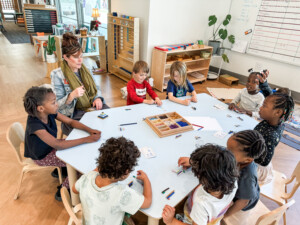


Tom Vander Ark
Attendees at the New Tech Network conference said thoughtful leaders:
-are good listeners and create systems and structures to listen at scale (turning empathy into structure)
-are Humble servant leaders
-exhibit integrity
-are good communicators and provide thoughtful guidance
-move in a direction that is good for all
-are inspiring
-providing resources that they need
-are supportive of risk taking (create a safe place for you to innovate) and encourage learning from failure
-are compassion, exhibit empathy at scale - embrace individuals & community
-are good thought-partner
-build leadership capacity in others
-embrace paradox: Tension between thoughtful leadership and innovation - able to say 'no' and 'yes'
-have a strong vision that you are committed to but not so much that you're not willing to change